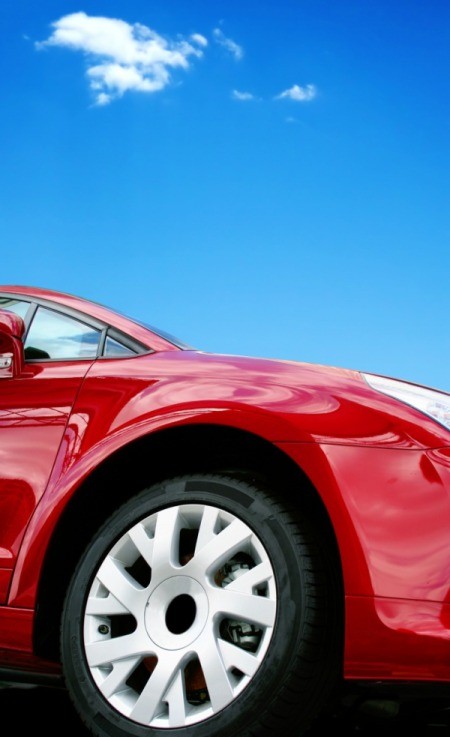
When you consider that there are well over 600 million cars on the road worldwide, you begin to understand how a few negative driving and maintenance habits can add up to large environmental damage. Lessen your car's impact on the environment by following these driving and maintenance tips:
To increase gas mileage and decrease emission pollutants, keep your car properly tuned-up and serviced according to manufacturer's recommendations.
Buy the longest lasting, most fuel-efficient tires possible and keep them balanced, rotated and properly inflated. Properly inflated tires reduce the wear on tire treads and conserve 2-4% of fuel use. Patronize dealers that recycle tires or find out if you have a tire-recycling center in your area.
Minimizing the use of your car's air conditioning will increase its gas mileage. Some units contain chlorofluorocarbons, green house gases that destroy the ozone, so repair air conditioner leaks immediately.
If you live in a cold climate, use a block heater in the winter season. When starting your car with a warm engine, the catalytic converter achieves maximum efficiency sooner.
The EPA estimates that keeping your driving speeds to 55mph can add up to a 10-15% fuel savings. Using cruise control saves fuel by keeping your foot activity to a minimum.
Every year, more than 350 million gallons of used motor oil ends up in the environment, as much as 2.1 tons of that in our rivers and streams. If you take your car to a station for oil changes, check first to make sure they will recycle it. If you change the oil yourself, call around to find a station that accepts used oil for recycling. Many will for a small fee-usually $.25-$1.00 per quart.
When driving at high speeds or over long distances, avoid carrying topside loads and keep your windows closed. The drag created reduces gas mileage. Remove unnecessary weight from the trunk to increase your car's fuel efficiency.
The gaskets on the ends of fuel-pump handles are there to prevent harmful vapors from escaping. Topping off your tank allows these smog-causing vapors to enter the atmosphere. It also increases the chance of accidental fuel spills.
Consolidating trips allows you to bypass congested routes, which leads to fewer starts and stops and less idling. Try to carpool whenever possible. If each commuter carried one additional person, we would save 600,000 gallons of gasoline a day and keep 12 million pounds of carbon dioxide from entering the atmosphere.
Use alternative means of transportation-buses, trains, subways, bicycles or walking-one day per week. If 1% of American car owners did this, we could save 42 million gallons of gas a year and keep 840 million pounds of CO2 out of the atmosphere.
When your car idles, you're getting zero miles to the gallon. Instead of idling your car in the bank or fast food drive-up, opt for service inside. Consider these facts about idling:

About The Author: Ellen Brown is an environmental writer and photographer and the owner of Sustainable Media, an environmental media company that specializes in helping businesses and organizations promote eco-friendly products and services. Contact her on the web at http://www.sustainable-media.com
Add your voice! Click below to comment. ThriftyFun is powered by your wisdom!
Properly inflated tires reduce gas emission. There are also related studies to prove that proper inflation helps in saving our environment.
Add your voice! Click below to comment. ThriftyFun is powered by your wisdom!